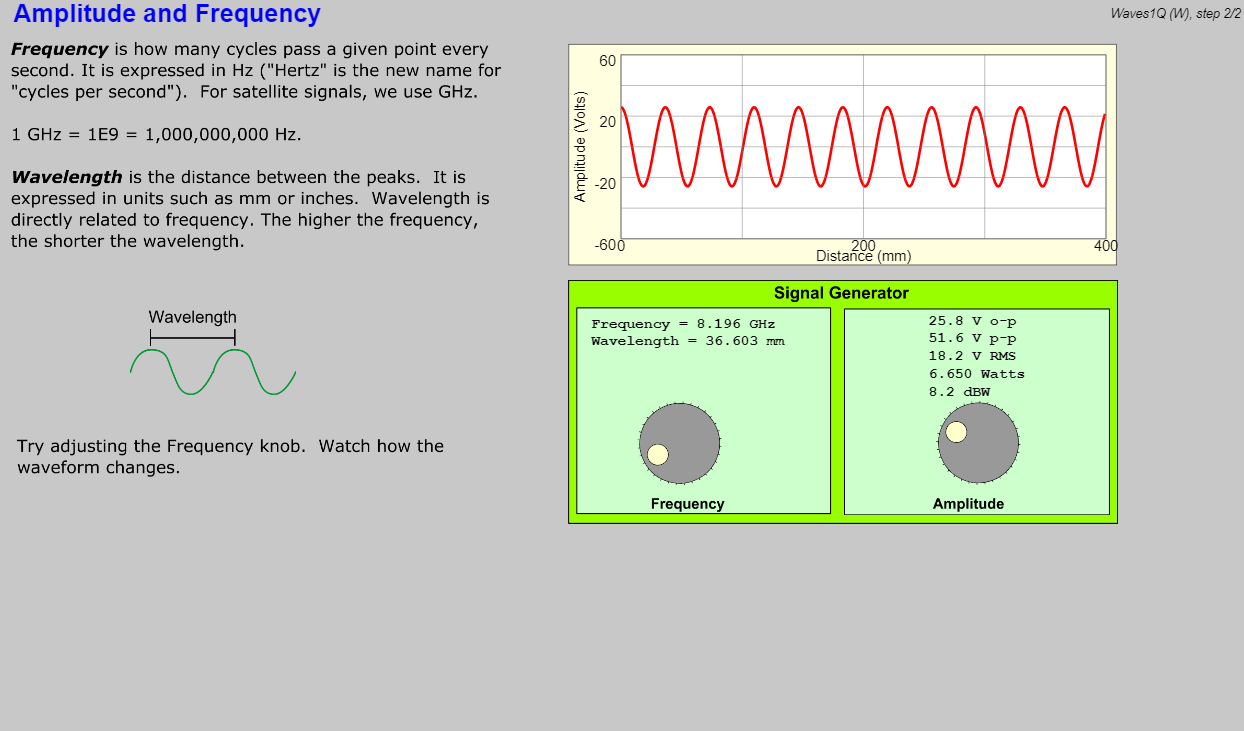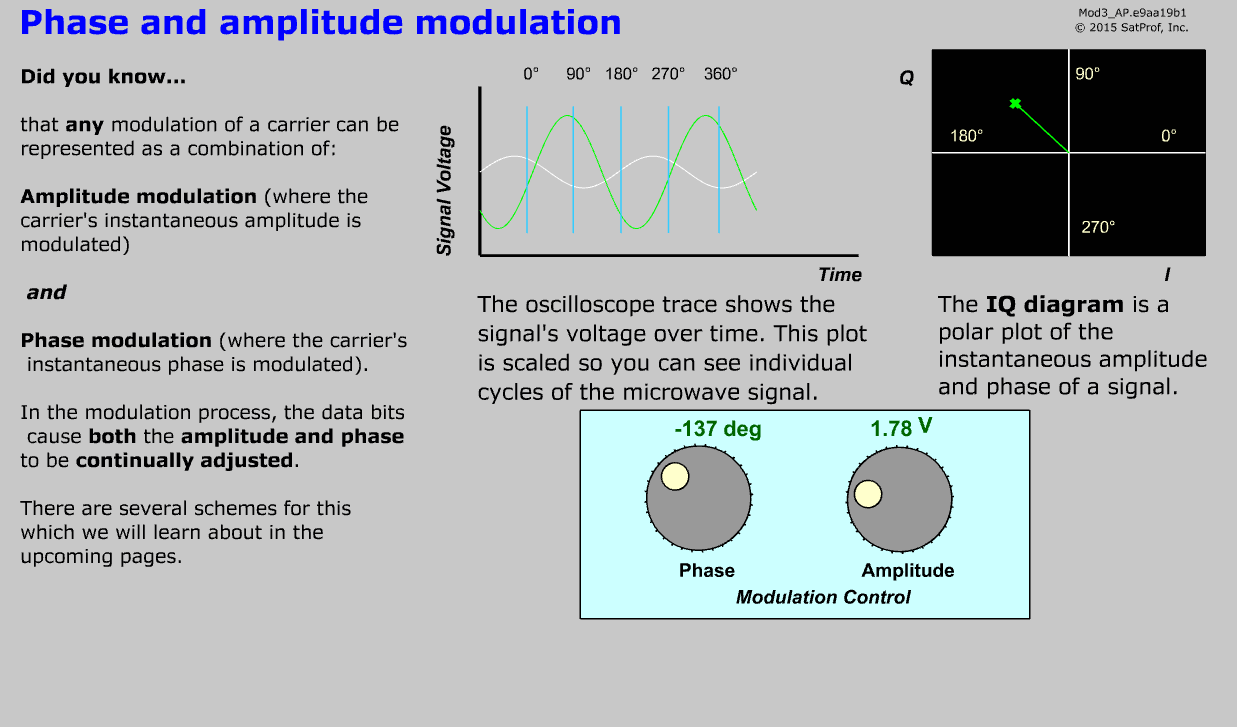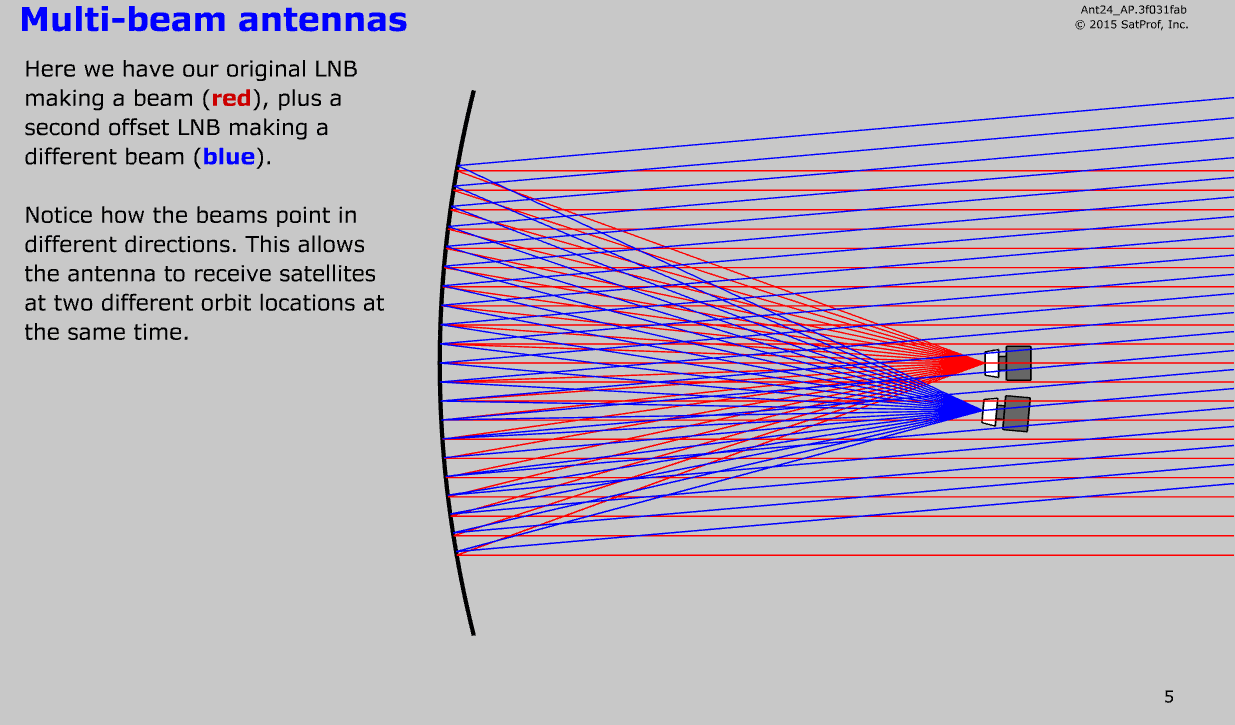Summary
-
Theory and knowledge important for all technicians and engineers involved with satellite television broadcast systems.
Description
Theory and knowledge important for all technicians and engineers involved with satellite television broadcast systems. The lessons cover digital TV transmission, microwaves and polarization, and receive systems.
Audience:
GVF 505 and 506 are are important first steps for technicians entering the fields of satellite television and communications.
Prerequisites:
None.
Delivery:
Animated & interactive HTML5, self-paced, on-line format. Requirements: internet access while studying the course material (high speed preferred ); current browser with JavaScript enabled; permission to access SatProf server and learning system websites; mouse.
Tests:
Each lesson contains a mandatory quiz; some lessons may also contain simulator-based skill assessments. All pages must be viewed and all quizzes and simulator tests must be passed in order to complete the course.Lessons
3 lessons
- Microwaves and polarization: Electromagnetic waves, amplitude, frequency, blockage. The EM spectrum, frequency bands for satcom. Launching waves, setting linear polarization, antenna orientation, circular polarization. Waves in DTH systems.
- Digital TV transmission: GEO satellites and orbit locations. Satellites viewed from the ground. Satellite television. Rain fade. Modulation and demodulation. Analog and digital modulation. Generating satellite TV signals. Signal standards. Uplink gateways. IRD program selection.
- Receive systems: Block diagram. How dish antennas work. Multi-beam antennas. Importance of accurate pointing. How LNB’s work. Polarities. DC and 22 kHz polarity control. Levels. Importance of cable. What is inside an IRD.


